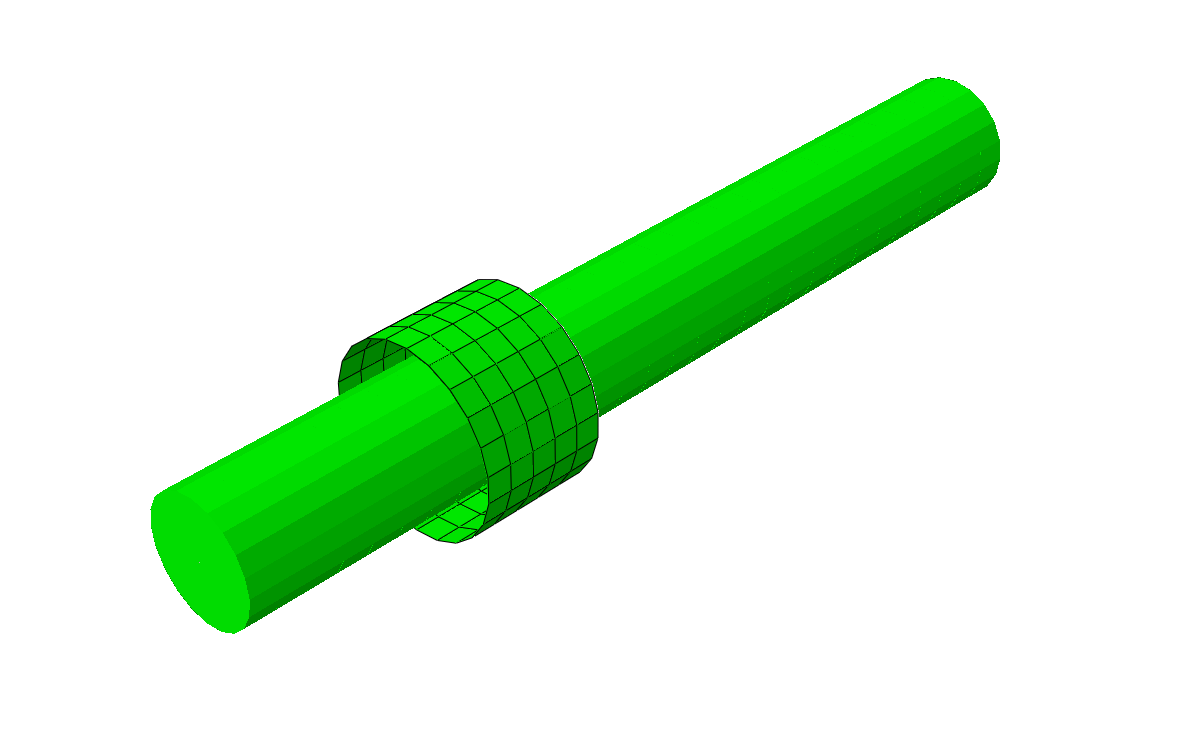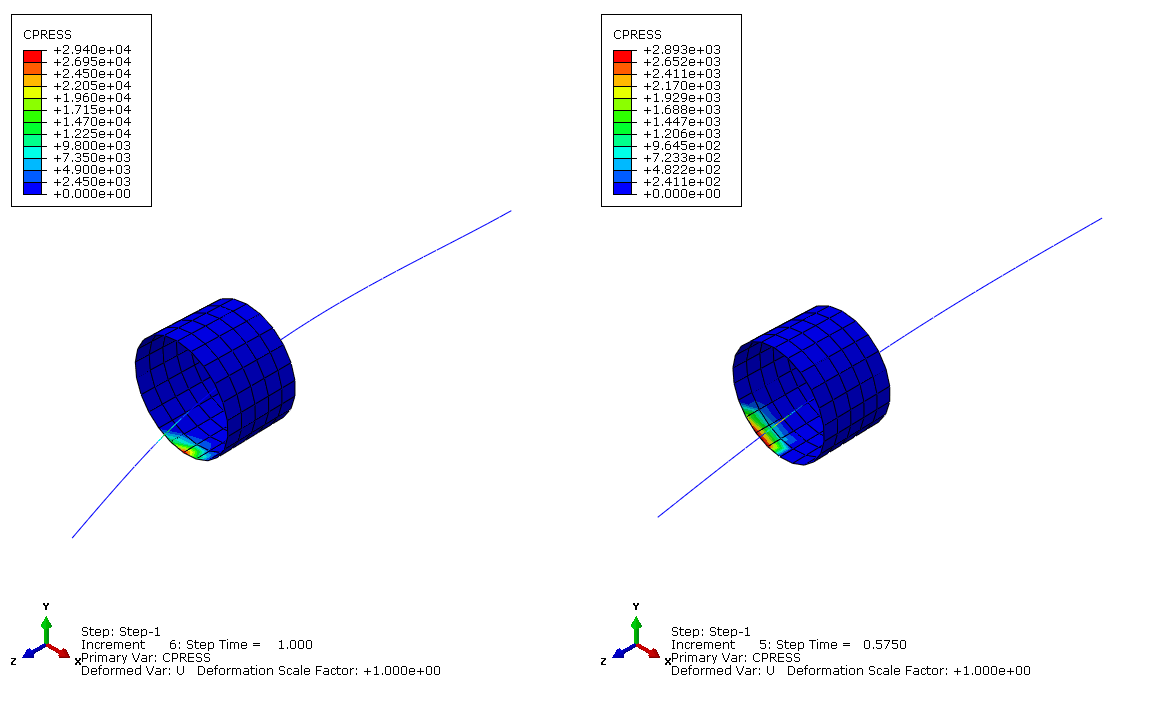Bending of a beam in a sleeve | ||||||
|
| |||||
ProductsAbaqus/Standard
Application description
Four contact formulations are available for general contact in Abaqus/Standard: surface-to-surface, edge-to-surface, edge-to-edge, and vertex-to-surface. For the edge-to-surface contact formulation involving line elements, such as beams and trusses, the default slave or master role assignment for the line element is that the line element acts as the slave unless the line element radius exceeds twice the typical facet dimension of the other surface. More accurate contact resolution occurs with a relatively large diameter line element acting as the master surface to a more-refined faceted surface.
The edge-to-surface contact formulation with a master role assignment for beam elements is illustrated with this simple example of bending a beam in contact with a cylindrical sleeve.
Geometry
A beam of radius 10 mm and length 150 mm passes through a cylindrical sleeve of radius 15 mm, length 20 mm, and thickness 1 mm. The beam and cylinder are coaxial (Figure 1). Both are made of steel with a Young's modulus of 200 GPa and a Poisson's ratio of 0.3. The contact between the beam and cylindrical sleeve is considered frictionless with a "hard" pressure-overclosure relationship. The general contact formulation with self-contact of an all-encompassing surface is used.
Boundary conditions and loading
One end of the beam is held fixed while the other end is subjected to a bending load of 20 N along the global Y-axis. The sleeve is held fixed rigidly.
![]()
Abaqus modeling approaches and simulation techniques
The edge-to-surface contact formulation for beam elements in Abaqus/Standard general contact is invoked automatically. Since self-contact within the beam or the shell surface is not applicable in this example, an all-encompassing surface with frictionless contact and a "hard" pressure-overclosure relationship is used.
Mesh design
The shell mesh is offset to the interior surface of the sleeve.
Results and discussion
Since the beam edge is treated as the master while the sleeve is treated as the slave, the contact between the beam and the sleeve surface is tracked well, leading to a good result and completion of the analysis (Figure 2). If the beam edge acts as a slave to the master surface of the sleeve, the beam bends but penetrates the cylindrical sleeve significantly as contact is not enforced properly.
![]()
Figures

